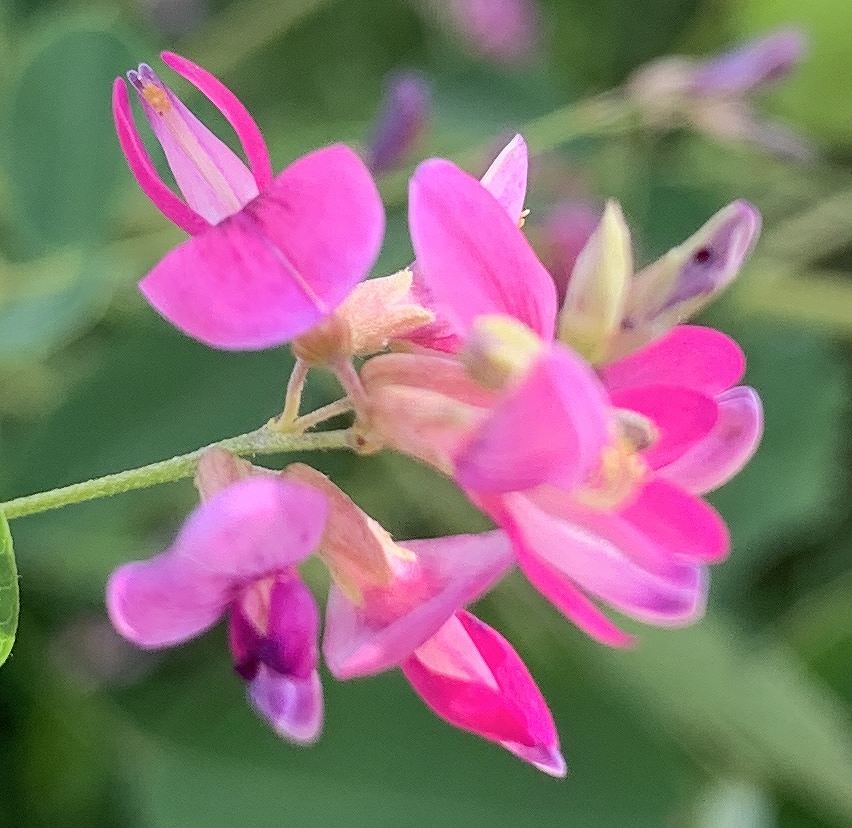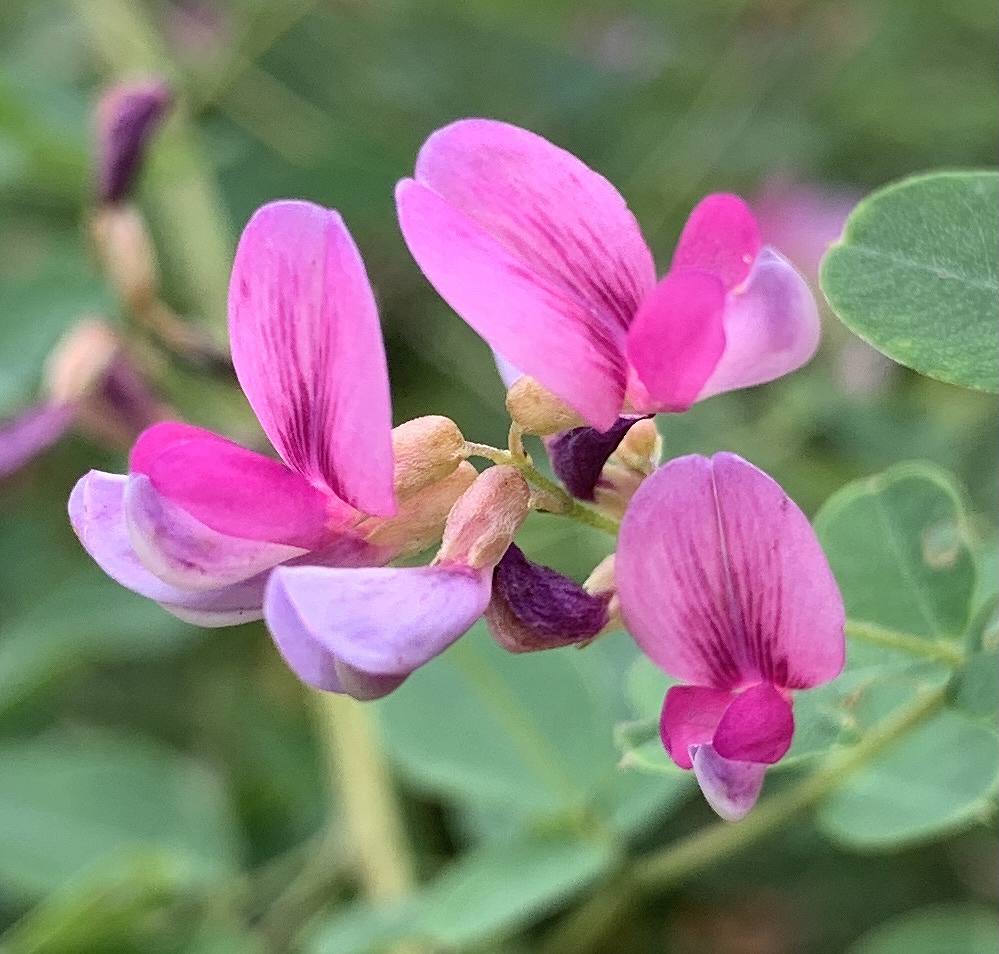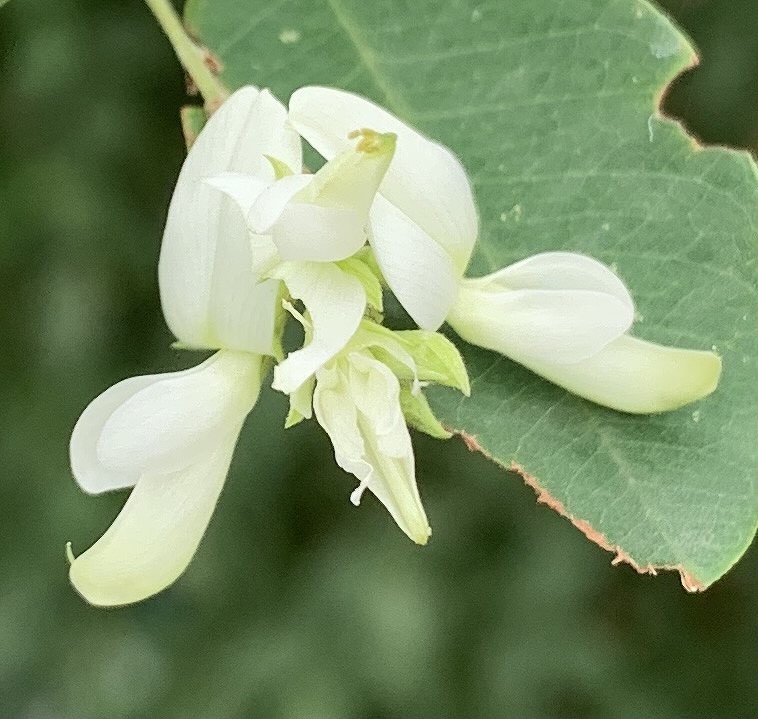ハギは『万葉集』で詠まれ、お月見でお供えされる秋の七草の一つ。花言葉は思案、内気、柔軟な精神で慎ましく繊細な様子を表しています。
Bush clover is one of the seven autumn herbs that is written in “Manyoshu” and offered at the moon viewing. The flower language expresses a modest and delicate appearance with thought, shyness, and a flexible spirit.
【仮名】ハギ, ヤマハギ, シラハギ
【和名】萩, 山萩, 白萩
【英名】Bush Clover, Japanese Clover, White Bush Clover
【学名】Lespedeza
【誕生】09/ 06, 09/ 24, 09/ 25, 10/ 01, 11/ 15
【開花】07, 08, 09, 10月
【花色】White, Pink, Red, Purple





ハギ
ハギの生育と形態
ハギはマメ科ハギ属の落葉低木です。木といっても毎年、根元から新しい茎が伸長。茎は木質化して硬くなるものの、太い枝や幹になったりしません。丈も高くならず、枝の先端に花芽がつき、全体的に枝垂れた樹形。分布はアジア東部・南部、北アメリカ東部、オーストラリアです。
ハギの文化、花言葉
ハギは日本で古くから親しまれてきた花。『万葉集』ではシカとの組み合わせで多く詠まれています。中秋の名月にお団子とともにハギとススキをお供えするお月見の風習。秋の七草の一つです。花言葉は「思案」「内気」「柔軟な精神」。ハギの慎ましく繊細な様子を表しています。
ハギと根粒菌
ハギは山火事跡などの痩せ地で最初に生えてくる先駆植物です。マメ科植物の根に着生する根粒菌が空気中の窒素を固定し、養分として植物に供給してくれるから。日本では昔、家畜の飼料としても利用されました。秋に山で枝ごと刈り取って乾燥。草の生えない冬に葉を与えました。
山の萩「ヤマハギ」
山の萩であるヤマハギは原産地のアジアから拡がり、各地で野生化。アメリカ合衆国でも19世紀から観賞用に導入され、帰化が進みました。日本では葉がお茶の代用に、日干しの根が薬用に。ヤマハギの葉や根には、ジメチルトリプタミンというアルカロイド物質が含まれています。
白い萩「シラハギ」
白い萩であるシラハギは、花の色が白く、樹全体に絹状の白い伏毛が生えています。園芸種として、各地で栽培されていますが、どのような系統で生じたか不明。ニシキノハギやタイワンハギの系統とする説もありましたが、最近はミヤギノハギの系統とする説が主流になっています。
Bush Clover
Bush clover is a deciduous shrub of the genus Lespedeza in the family Leguminosae. Even though it is a tree, new stems grow from the root every year. The stems become woody and hard, but they do not become thick branches or trunks. The tree is not tall, has flower buds at the tips of the branches, and weeps as a whole. Distribution is in eastern and southern Asia, eastern North America, and Australia.
Bush clover is a flower that has been popular in Japan for a long time. In “Manyoshu”, it is often written in combination with deer. The custom of viewing the moon by offering Bush clover and pampas grass with dumplings in the mid-autumn moon. It is one of the seven autumn herbs. The flower language is “thought,” “shyness,” and “flexible spirit.” It shows the humble and delicate appearance of the Bush clover.
Bush clover is the first pioneer plant to grow in lean areas such as the remains of mountain fires. Rhizobia that grow on the roots of legumes fix nitrogen in the air and supply it as nutrients to the plants. In Japan, it was used as feed for livestock in the olden days. In the fall, the branches are cut and dried in the mountains. They gave the leaves in the grassless winter.
Yamahagi, a mountain Bush clover, has spread from the place of origin in Asia and has become wild in various places. It was introduced for ornamental use in the United States from the 19th century, and naturalization has progressed. In Japan, leaves are used as a substitute for tea, and sun-dried roots are used for medicinal purposes. The leaves and roots of Lespedeza bicolor contain an alkaloid substance called dimethyltryptamine.
Shirahagi, a white Bush clover, has white flowers and silky white downy hairs all over the tree. It is cultivated in various places as a horticultural species, but it is unknown what kind of strain it originated from. There was a theory that it was a strain of Nishikinohagi or Taiwanhagi, but recently, the theory that it is a strain of Miyaginohagi has become mainstream.


